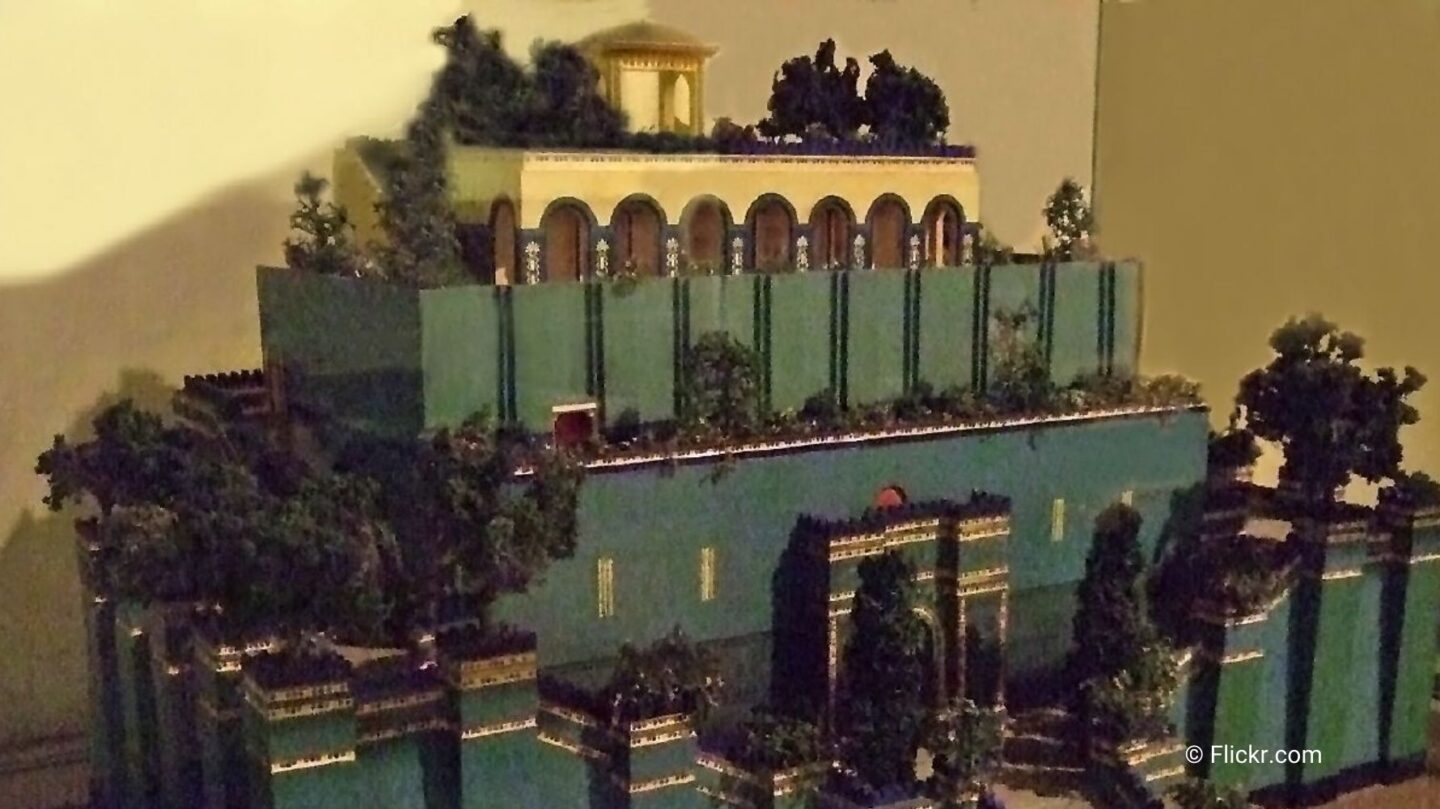One of the Seven Wonders of the Ancient World
The Hanging Gardens of Babylon are one of the most enchanting and mysterious wonders of the ancient world. Described as a lush, terraced garden filled with exotic plants, flowing waterfalls, and towering trees, they were said to be built in the ancient city of Babylon, near modern-day Baghdad, Iraq. Despite their fame, the gardens remain shrouded in mystery, as no definitive archaeological evidence of their existence has ever been found.
First chronicled by ancient Greek and Roman historians such as Herodotus and Strabo, the Hanging Gardens were allegedly built by King Nebuchadnezzar II in the 6th century BCE as a gift for his wife, Queen Amytis, who missed the green hills of her homeland. But were they real, or are they simply a legend?
The Descriptions of the Hanging Gardens
According to ancient accounts, the Hanging Gardens were a marvel of engineering and beauty. They were said to consist of tiered terraces resembling a green mountain, with water flowing from the top to nourish the plants. This irrigation system, supposedly powered by an ingenious series of pumps or channels, allowed the gardens to thrive in the arid landscape of Mesopotamia.
The gardens were described as a sensory paradise, featuring vibrant flowers, fruit-bearing trees, and fragrant herbs. To the Greeks, who were accustomed to dry landscapes, the gardens must have seemed like an earthly Eden.
The Lack of Archaeological Evidence
Despite their detailed descriptions in ancient texts, no conclusive evidence of the Hanging Gardens has been uncovered in Babylon. Excavations of the city have revealed impressive structures such as the Ishtar Gate and the ziggurat of Etemenanki, but no remnants of the gardens have been found. This absence has led some scholars to question whether the gardens existed at all.
One theory suggests that the gardens, if they existed, may have been destroyed and their materials repurposed over the centuries. Others argue that the descriptions of the Hanging Gardens were exaggerated or symbolic, serving more as a literary device than a factual record.
A Possible Alternative Location
Some researchers propose that the Hanging Gardens were not in Babylon at all but rather in Nineveh, the capital of the Assyrian Empire. This theory is based on the writings of Assyrian King Sennacherib, who described an elaborate palace garden with advanced irrigation techniques. Archaeological evidence from Nineveh, including aqueducts and inscriptions, supports the possibility that such a garden existed there.
If the Hanging Gardens were indeed located in Nineveh, they may have been mistakenly attributed to Babylon by later Greek historians, who were known to conflate details about ancient Mesopotamian cultures.
A Blend of Myth and Reality
The Hanging Gardens of Babylon may be a fusion of historical truth and creative embellishment. The ancient Mesopotamians were renowned for their engineering and agricultural innovations, and it is plausible that some form of grand garden existed in Babylon or Nineveh. However, the romanticized descriptions of the gardens, with their towering terraces and exotic plants, could reflect the imagination of ancient writers.
The gardens also hold symbolic significance, representing human ingenuity, the ability to harness nature, and the desire to create paradise on earth. Even if they never physically existed, their legend has inspired countless stories, artworks, and architectural designs.
The Legacy of the Hanging Gardens
Whether fact or fiction, the Hanging Gardens of Babylon remain one of the most captivating stories of the ancient world. They symbolize humanity’s enduring fascination with beauty, nature, and the extraordinary. The mystery of the gardens invites us to imagine a world where ambition and creativity transform the impossible into reality—a timeless aspiration that continues to inspire.
